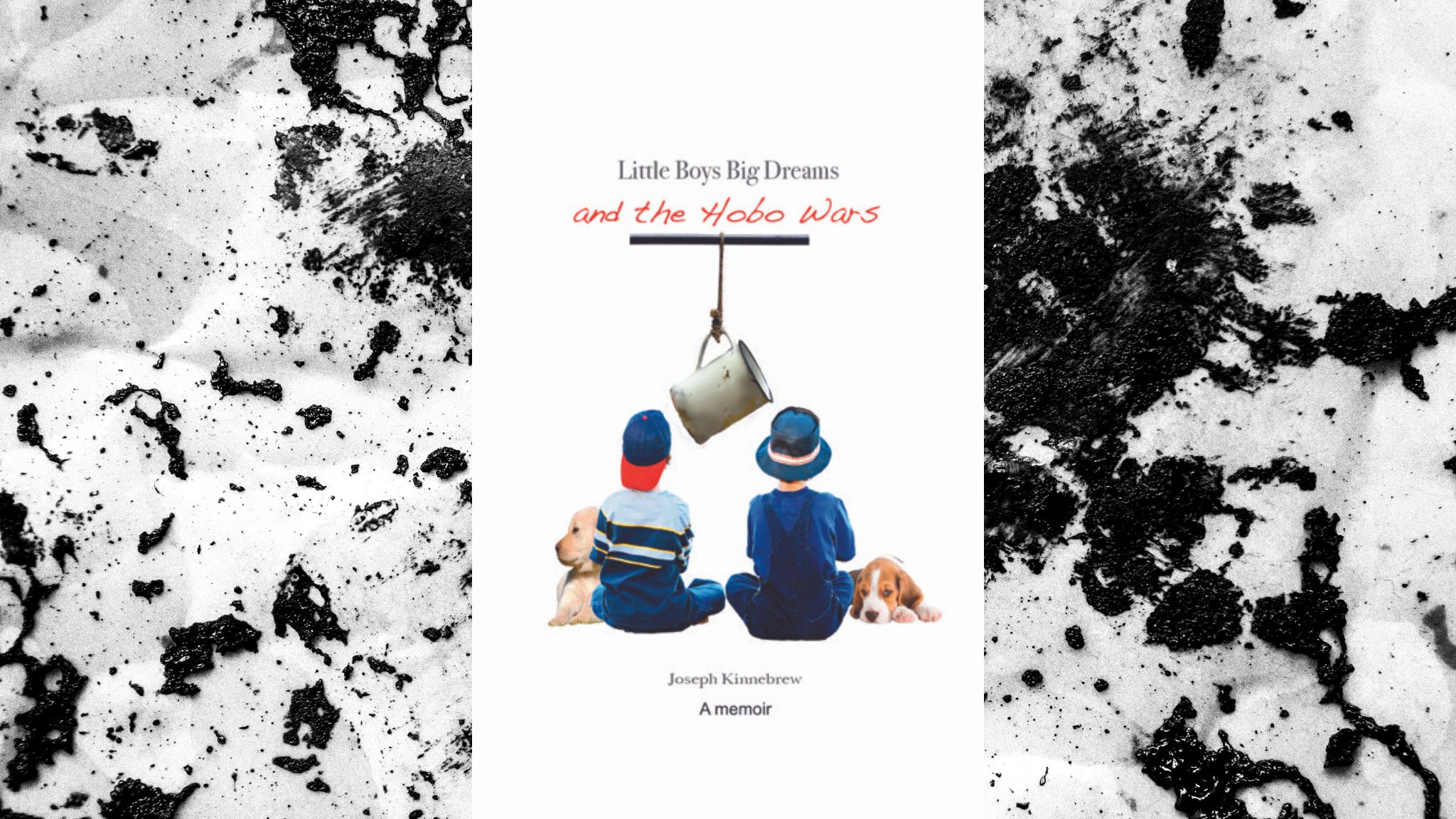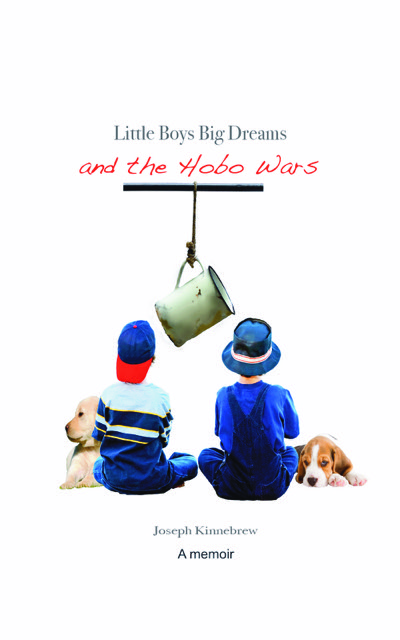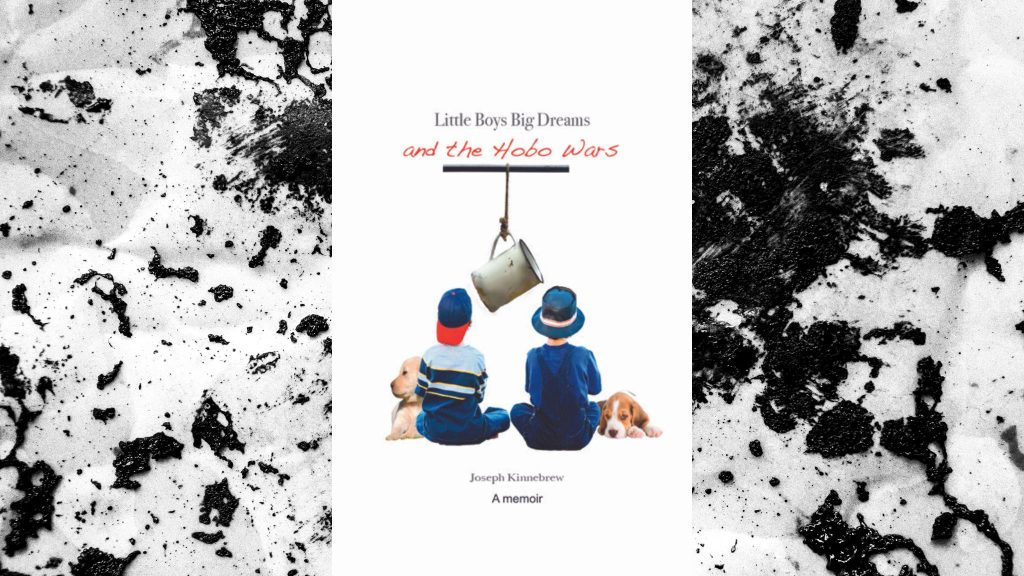
Little Boys Big Dreams by Joseph Kinnebrew
What’s it About?
Joseph Kinnebrew’s memoir, Little Boys Big Dreams and the Hobo Wars, is an immersion in a nostalgic time and place, when the delivery of the neighborhood’s first television is a monumental milestone.
It’s 1948 in Tacoma, Washington, and 8-year-old Joe and his best friend Freddie have a lot going on. Each day is filled with thrilling adventures — like keeping the younger kids out of Fort Blackberry, avoiding all girls, and planning gruesome punishments for people who are mean to dogs.
Joseph Kinnebrew’s memoir, Little Boys Big Dreams and the Hobo Wars, is an immersion in a nostalgic time and place, when the delivery of the neighborhood’s first television is a monumental milestone.
Joe, like his cohorts, is loved and cared for. His father owns a furniture factory, his grandfather is a respected retired chemist, and his mother, the main adult in his life, has gone to “Mom School” where she’s learned how to make cakes, pies and cookies, how to cut peanut butter and jelly sandwiches into four equal squares, and some basic doctoring skills.
Joe has a little brother he barely tolerates. “About the only use for a brother or sister who is younger is you can blame stuff on them,” he explains.
Had Holden Caulfield been 8 when he told his story, it may have read something like this book.
The World War is over, but on Alder Street, the war with the hobos simmers. Homeless men, refugees of the Depression or the war, live in rough shelters at the bottom of a gulley. Although mothers might give hobos food when they knock on back doors, says Joe, all mothers tell their children that hobos “kidnapped young boys, and sold them. That’s right, that is what they did and when they did no kid had ever returned to tell about it. How our moms learned this we didn’t know or question”
IMMERSION IN A NOSTALGIC TIME AND PLACE
The boys make battle plans but before mud is launched, a more immediate threat develops. Almost as scary as the tramps is the boy in a wheelchair, Bobby. Joe and friends report sightings as Bobby ventures out on the neighborhood sidewalks, always staying close to his home, a residence Joe’s mom calls “run down.”
Because Bobby is all twisted up and unable to “talk right,” Joe and the boys think of him as a “creature” or “the hulk” and suspect that his rolling contraption is armed with machine guns. As they come to know him, though, Joe recognizes, “We didn’t know it at the time, but Bobby was an important lesson in life for many reasons.”
Male readers may chuckle as they recognize the universal constants of boyhood: “All kids have to dig a China Hole before they can move on.”
Female readers may be surprised to learn that little boys view girls with suspicion, and consider them dangerous. “…(N)ever get too close to girls because at some point they will put a spell on you. That spell will be the end of your life and there will be no more forts, wars against injustice, you can’t have a dog, and for sure no great meals of fire-roasted potatoes and bacon on a stick.”
Joseph Kinnebrew is a prolific sculptor, painter, multimedia artist, lecturer, inventor and author who’s been described as an “eccentric creative genius.” New York Times critic William Zimmer calls his work “the 800-pound gorilla, impossible to ignore.”
In his latest book’s introduction, Kinnebrew writes, “Little boys are charmers in these early years. How they will act, behave, lead, or follow in large part comes early. In many ways little boys, in their hearts, are always little boys and some better for it.”
With this boyhood memoir, he’s given insight into how it all began. We hope there will be more memoirs to come.
About the Author:
Joseph Kinnebrew is a sculptor, painter, lecturer, inventor and author. He has been described by several in the art world as an eccentric creative genius. This archive portion of the Kinnebrew site provides an in depth view his fine art, music composition, design, lecturing and writing. The art shown here is for sale, sold work is archived elsewhere.
Kinnebrew’s is represented in the collections of major museums as well as many well established private collections. His work has been exhibited internationally including the Biennale in Florence Italy, Palm Beach Biennale, Israel, Germany, Canada, Japan and formally the Walter Wickiser Gallery in New York, Art Miami, Art Chicago and Art Toronto.
Kinnebrew’s digital collages represent his continuing commitment to work that reflects the thoughts and observations of an important, mature, contemporary artist working across a wide range of media. He remains focused on post-modernism and the Singularity.
New York Times critic William Zimmer has written, “His work is the 800-pound gorilla, impossible to ignore”.
As a minimalist his sculpture is monumental and in his bronzes one senses a powerful sensuality that is again expressed in his surreal and botanical paintings.
At 73 he continues to produce work with energy that those half his age can only envy. With his unrelenting pace and output of of creativity, Kinnebrew rushes forward often leaving others with only a glimpse of what their futures may be. He races on already having seen it.

Publish Date: 6/10/2018
Author: Joseph Kinnebrew
Page Count: 195 pages
ISBN: 9781983133039

